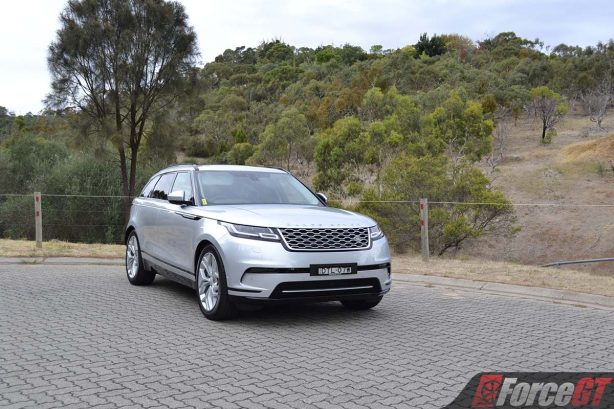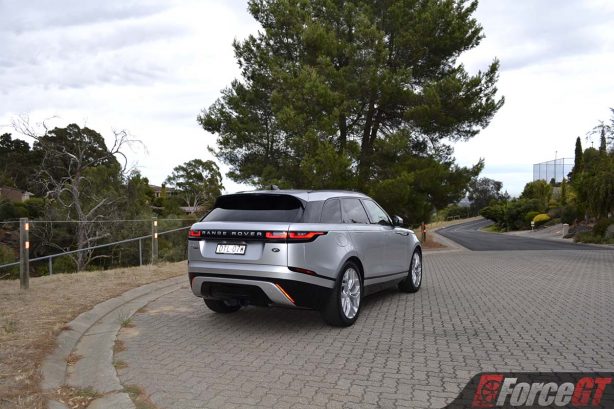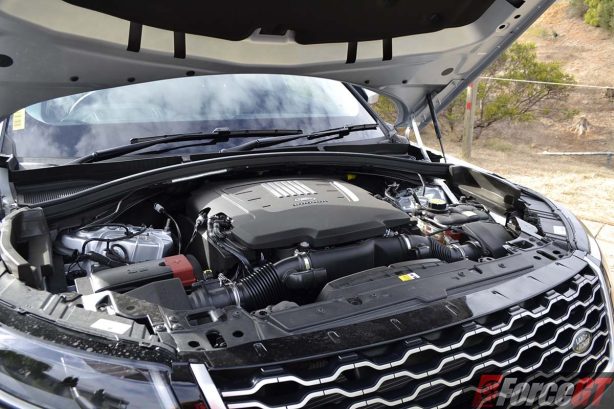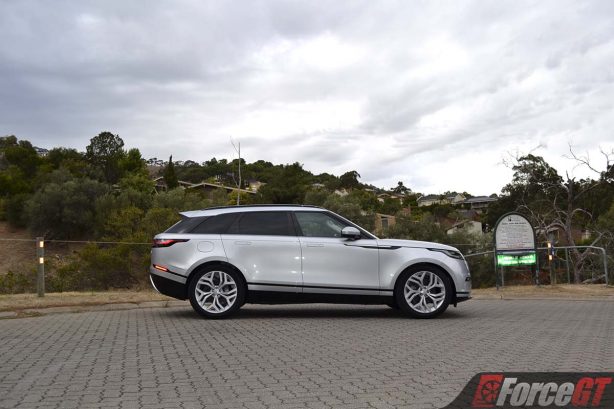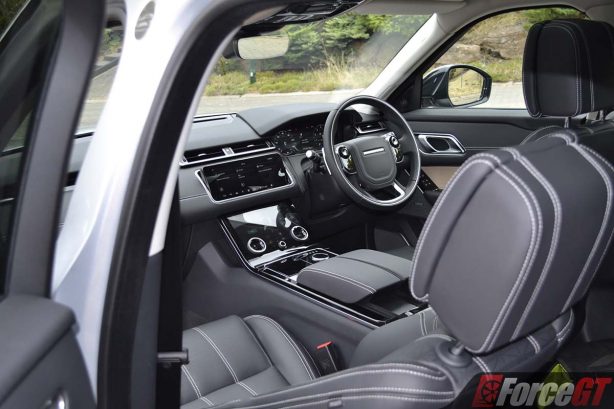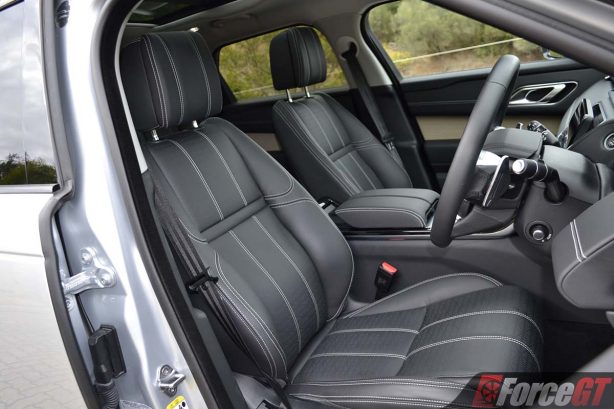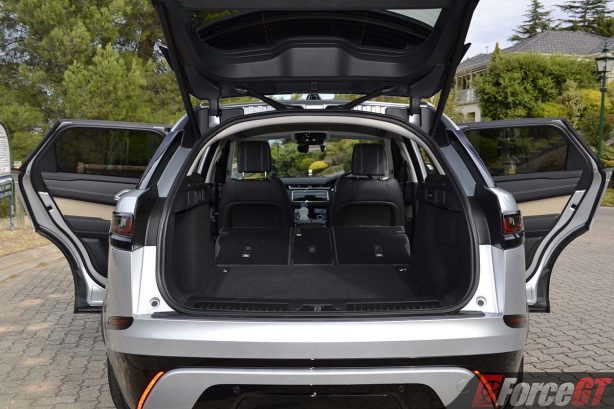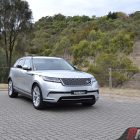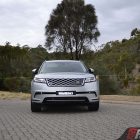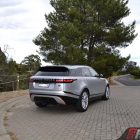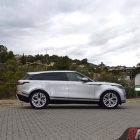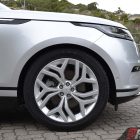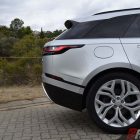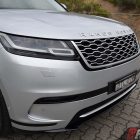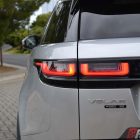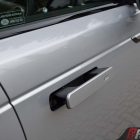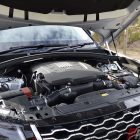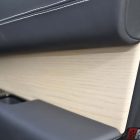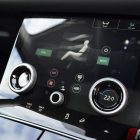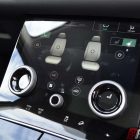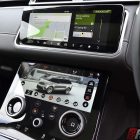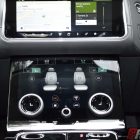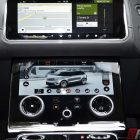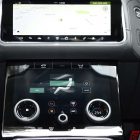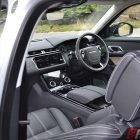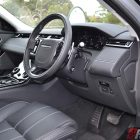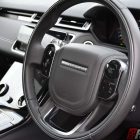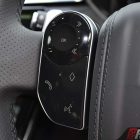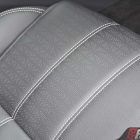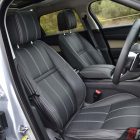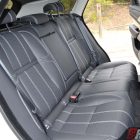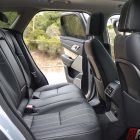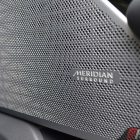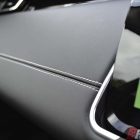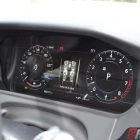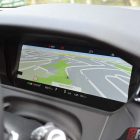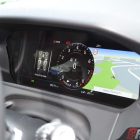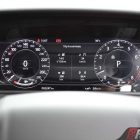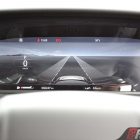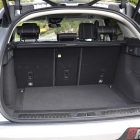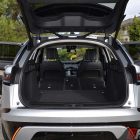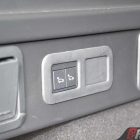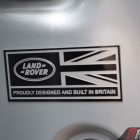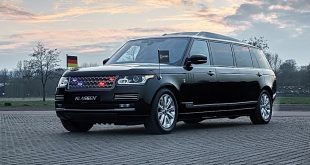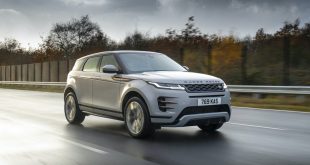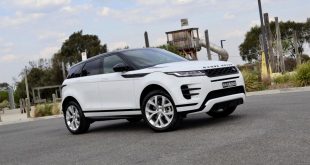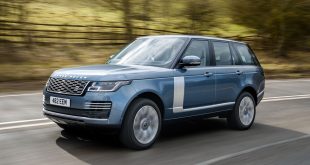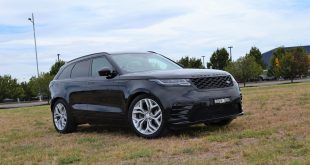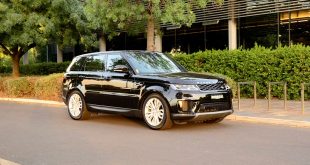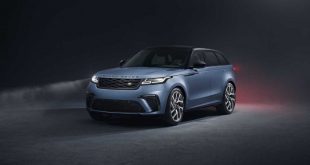Land Rover is on a roll these days, churning out models that seem to come straight from the glittering motor show stand into its fancy showrooms. And if Leonardo da Vinci were to design a modern SUV, the elegant Range Rover Velar would probably be his masterpiece.
From the pioneering deployable door handles to the 3D bejewelled headlights and stunning interior, the Velar is a triumph of modern industrial design. It’s hardly surprising the new Range Rover has been crowned World Car Design of 2018.
Named after Range Rover’s first prototypes of the 1960s and billed as a mid-size premium SUV, the Velar looks almost one size bigger than its rivals which include the BMW X4, Mercedes-Benz GLC Coupé and Porsche Macan.
Slotted between the stylish compact Evoque and the larger Range Rover Sport, the five-seat Velar starts from $70,300, although our one down from the top P380 SE test car carries a $113,462 price tag before on-road costs and a Volkswagen Polo GTI’s worth of options (see table below).
For the base price, you get a thrusty 3.0-litre supercharged V6 petrol engine that delivers 280kW at 6,500rpm and a stout 450Nm at 3,500-5,000rpm, capable of a hot hatch rivalling 0-100km/h sprint of just 5.7 seconds. Helped by four-wheel drive, the Velar certainly launches quickly off the mark for a big, hefty SUV as long as you are prepared to rev it hard.
It’s a familiar unit shared with the Jaguar F-Type S and is tuned for refinement rather that outright aural engagement like in the sports car. Mated with an intuitive 8-speed automatic, it is decently smooth with good engine response throughout the rev range.
It is also equipped with fuel-saving engine idle stop although it worked only once throughout our test period despite meeting conditions that would shut off the engines of most other cars I have tested. A gremlin lurking within, perhaps? As a result, our tested combined average consumption was 11.8L/100km, a massive 2.4L/100km more than its rated average.
V6 models also come standard with electronic air suspension that lets you adapt the car to your mood or terrain. In Comfort mode, its pampering ride irons out road imperfections in a gentle, delicate manner despite rolling on massive optional 21-inch wheels. It may be slightly wafty but there’s enough body control to prevent it from wallowing about in corners.
Flicking the drive mode to Dynamic will deliver a more dynamic handling but it still lacks the composure of some of its rivals, including platform-mate, the Jaguar F-Pace. There’s noticeable lean in corners and you can feel the Velar’s heft being thrown about, though not in a QE2 kind of way. Nevertheless, you wouldn’t describe it as agile. There’s a distinct pause as the mass of the car do catch up with steering inputs and turns its nose in.
However, that doesn’t mean you can’t exploit the muscular powertrain and decent grip from the fat, sticky tyres and drive it quickly, but its slightly ponderous nature might discourage you just as quickly.
While the Velar may be shy around the bends, what impresses is how car-like it is to drive, thanks to its D7A aluminium-intensive platform that also underpins the Jaguar XE sedan. Its steering is beautifully responsive and precise despite coming across as a little wooden on centre. It’s light enough at parking speeds to not feel like you’re manoeuvring a Mack truck, while all controls are appropriately weighted.
JLR’s V6 is near silent at low revs and produces a pleasant howl as revs climb, while the cabin is generally hushed and peaceful at lower speeds, there is some wind noise from the wing mirrors at freeway speeds. Its brakes cope well with the Velar P380’s performance and weight, too.
Being a Range Rover, the Velar also tackles the beaten tracks with poise and surprising ease, although you’ll have to spend an extra $640 on the All Terrain Progress Control for the pleasure. Our test car also has the optional ($430) Terrain Response 2 which adjusts the appropriate combination of terrain response settings automatically – a worthwhile option for off-road buffs.
If the Velar’s elegant sheet metal could have been the work of one of the world’s greatest artists, its concept-like interior is worthy of a spot in the Museum of Modern Art.
The cabin is clean, classy and minimalistic, with no less than three high-resolution TFT screens on the beautifully crafted and leather-clad dashboard – a 12.3-inch digital instruments directly in front of the driver and two 10-inch touch sensitive screens on the centre of the dash.
Most of the car’s functions are accessed via the low-mounted touch screen using the two rotary dials that adapts to the menu selected. Similarly, the steering wheel mounted control also changes according to the function selected.
The screen graphics are appealing and sharp, although the Velar’s digital instrument isn’t as sleek as those from Audi. Disappointingly, Apple CarPlay and Android Auto are also not available.
The plush and supple seats – complete with Union Jack motives – are supportive and comfortable and thanks to the lofty driving position, front and side visibility is good, while the thick windscreen pillars can obscure vision at junctions. There’s rear parking sensors and a 360o rear view camera to help with rear visibility.
The Velar’s generous dimensions translate to an airy interior, with plenty of front and rear headroom even with the optional panoramic sunroof. The rear seats can easily accommodate three passengers, although the centre passenger has to content with a transmission hump, which isn’t as intrusive as some rivals.
The door bins are big enough to swallow a 500ml bottle plus some, while the glovebox is also decently sized.
Behind the Velar’s electric tailgate is 673 litres of boot space that can be expanded to 1,731 litres by folding down the 40/20/40 split rear seat. Air-sprung models will lower automatically when parked for ease of access, too. Like most foot-operated hands free tailgates, it’s a hit-and-miss affair with the Velar.
Land Rover is known for its extensive and pricey options. Our test car is equipped with over $30,000 worth of extras, from the $440 Satin Blond Linear Veneer to the eye watering $7,730 20-way memory front seats with massage function and heating and ventilation. Even DAB+ digital radio and adaptive cruise control, standard on many far more affordable cars, are optional.
- READ MORE: Range Rover Velar full specification
Standard features include Autonomous Emergency Braking, Lane Departure Warning, Matrix LED headlights, Blind Sport Monitoring, Satellite Navigation, an 825W, 17 speakers Meridian Surround Sound System and three 12V power sockets.
Verdict
Design and Comfort: 9.0/10
Performance and Handling: 7.0/10
Quality: 8.0/10
Economy: 7.5/10
Features and Equipment: 8.0/10
The sleek Range Rover Velar’s sex appeal is second to none. Its glamorous sheet metal and stunning interior makes it super desirable.
While its supercharged V6 is thrusty and refined, its dynamics could use a bit more polish.
But as a practical, luxury SUV, the Range Rover Velar ticks all the right boxes.
Pros:
- Concept car looks
- User friendly and stunning interior
- Punchy supercharged V6
- Comfortable
Cons:
- No Apple CarPlay or Android Auto
- Expensive options
2018 Range Rover Velar P380 SE pricing and specification
| Price (Excluding on-road costs): | From $113,462 As tested: $144,182 Tested options: · 20-Way Seats w/- Driver/Passenger Memory, Massage and Heated/Cooled Front Seats – $7730 · Sliding Panoramic Roof – $4370 · Interior Luxury Pack – $2440 · Head-Up Display – $2420 · Premium Exterior Pack – $2310 · Perforated Windsor Leather Seats – $1910 · Indus Silver Metallic Paint – $1780 · 21” 5 Split-Spoke ‘Style 5047’ Alloy Wheels – $1430 · Tow Hitch Receiver – $1000 · Black Roof Rails – $940 · Privacy Glass – $890 · Electrically Adjustable Steering Column – $890 · All Terrain Progress Control – $640 · Solar Attenuating Windscreen – $560 · Configurable Ambient Interior Lighting – $540 · Satin Blonde Linear Veneer – $440 · Terrain Response 2 – $430 |
| Warranty: | 3 years/100,000km |
| Warranty Customer Assistance: | 3 years roadside assist |
| Country of Origin: | United Kingdom |
| Service Intervals: | 12 months/26,000km |
| Engine: | 3.0-litre supercharged, direct-injected V6 petrol: 280kW @ 6,500rpm, 450Nm @ 3,500-5,000rpm |
| Transmission: | 8-speed automatic |
| Drivetrain: | Four-wheel drive |
| Power to Weight Ratio (W/kg): | 148.6 |
| 0-100km/h (seconds): | Claimed: 5.7 |
| Combined Fuel Consumption (L/100km): | Claimed: 9.4/Tested: 11.8 |
| Fuel Capacity (L): | 63 |
| RON Rating: | 95 |
| Body: | 5-door SUV, 5-seats |
| Safety: | · 5-star ANCAP · Electric Parking Brake · Single-speed Transfer Box · Anti-Lock Braking System · Electronic Air Suspension · Torque Vectoring by Braking · Autonomous Emergency Braking · Lane Departure Warning · Matrix LED headlights · Tyre Pressure Monitoring System · Blind Spot Monitoring and Driver Condition Monitor · 360o Reverse Camera · front and Rear Parking Sensors · Cruise Control · Powered Gesture Tailgate · Space Save Spare · ISOFIX |
| Dimensions (L/W/H/W-B) mm: | 4,803/2,032/1,665/2,874 |
| Turning Circle Between Kerbs: | 11.6 |
| Ground Clearance: | 251 |
| Wading Depth: | 650 |
| Approach Angle: | 25.9 |
| Departure Angle: | 27.3 |
| Breakover Angle: | 21 |
| Tare Mass (kg): | 1,884 |
| Boot Space (min/max) (L): | 673/1,731 |
| Towing Capacity (kg): | Braked: 2,500/Unbraked: 750 |
| Entertainment: | · Touch Pro Duo with two 10-inch colour touch screen · Navigation Pro · 825W, 17-speakers Meridian Surround Sound System · Pro Services and Wi-Fi Hotspot · AM/FM · Bluetooth · 2x USB |
Competitors: BMW X4, Mercedes-Benz GLC Coupé, Porsche Macan.
 ForceGT.com Car News, Car Reviews, Video Reviews, Tuning and much more.
ForceGT.com Car News, Car Reviews, Video Reviews, Tuning and much more. 